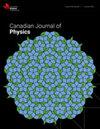加速器中子产生新时代的硼中子捕获疗法及加拿大的初步进展
IF 1
4区 物理与天体物理
Q3 PHYSICS, MULTIDISCIPLINARY
引用次数: 2
摘要
每年有3000多名加拿大人被诊断患有脑癌,如多形性胶质母细胞瘤或复发性头颈部癌症,这些癌症很难用传统的放射治疗技术治疗。硼中子俘获疗法(BNCT)是临床上最有希望治疗这些癌症的方法之一。这个过程包括选择性地将硼递送剂引入肿瘤细胞并用中子束照射它们,由于10B(n,α)7Li捕获反应产生的高let辐射杀死癌细胞。自1936年以来,BNCT理论已经存在了很长时间,但历史上一直受到硼输送剂差和非最佳中子源设施的限制。尽管在这两个领域都取得了重大进展,但主要是基于加速器的中子源的进步导致了过去十年中全球20多个新的BNCT设施的扩建。此外,在这项工作中,与筑波大学合作,进行了PHITS(粒子和重离子传输码系统)模拟,以检查茨城硼中子捕获疗法(iBNCT)束整形组件(BSA)在提议的PC-CANS(加拿大原型紧凑型加速器中子源)站点上调节适合BNCT的中子束的有效性。它使用一种类似但能量稍高的10兆电子伏质子加速器,平均电流为1毫安。近几十年来,基于紧凑型加速器的中子源技术的进步使BNCT技术取得了重大进展,使其成为一种更可行的临床治疗选择。本文章由计算机程序翻译,如有差异,请以英文原文为准。
Boron Neutron Capture Therapy in the New Age of Accelerator-Based Neutron Production and Preliminary Progress in Canada
Each year more than 3,000 Canadians are diagnosed with brain cancers like glioblastoma multiforme or recurrent head and neck cancers which are difficult to treat with conventional radiotherapy techniques. One of the most clinically promising treatments for these cancers is boron neutron capture therapy (BNCT). This procedure involves selectively introducing a boron delivery agent into tumor cells and irradiating them with a neutron beam, which kills the cancer cells due to the high-LET radiation produced by the 10B(n,α)7Li capture reaction. The theory of BNCT has been around for a long time since 1936, but has historically been limited by poor boron delivery agents and nonoptimal neutron source facilities. Although significant improvements have been made in both of these domains, it is mainly the advancements of accelerator-based neutron sources that has led to the expansion of over 20 new BNCT facilities worldwide in the past decade. Additionally in this work, PHITS (Particle and Heavy Ion Transport Code System) simulations, in collaboration with the University of Tsukuba, were performed to examine the effectiveness of the Ibaraki-Boron Neutron Capture Therapy (iBNCT) beam shaping assembly (BSA) to moderate a neutron beam suitable for BNCT at the proposed PC-CANS (Prototype Canadian Compact Accelerator-based Neutron Source) site, which uses a similar but slightly higher energy 10 MeV proton accelerator with a 1 mA average current. The advancements of compact acceleratorbased neutron sources in recent decades has enabled significant improvements in BNCT technologies, allowing it to become a more viable clinical treatment option.
求助全文
通过发布文献求助,成功后即可免费获取论文全文。
去求助
来源期刊

Canadian Journal of Physics
物理-物理:综合
CiteScore
2.30
自引率
8.30%
发文量
65
审稿时长
1.7 months
期刊介绍:
The Canadian Journal of Physics publishes research articles, rapid communications, and review articles that report significant advances in research in physics, including atomic and molecular physics; condensed matter; elementary particles and fields; nuclear physics; gases, fluid dynamics, and plasmas; electromagnetism and optics; mathematical physics; interdisciplinary, classical, and applied physics; relativity and cosmology; physics education research; statistical mechanics and thermodynamics; quantum physics and quantum computing; gravitation and string theory; biophysics; aeronomy and space physics; and astrophysics.
 求助内容:
求助内容: 应助结果提醒方式:
应助结果提醒方式:


